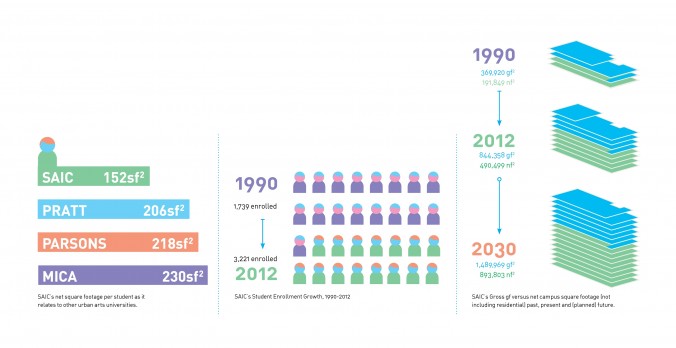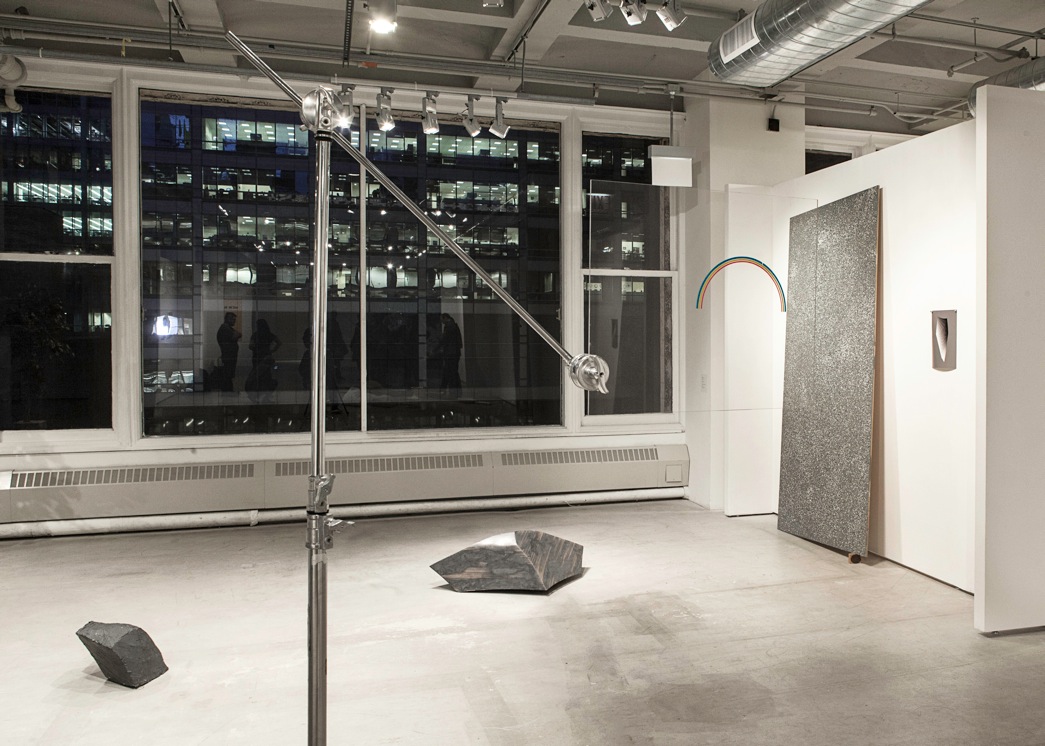
As late winter sweeps over Chicago, students scurry from their toasty beds to the bus, to class, to work, to the Neiman Center, and quickly back. While the U.S. Department of Health and Human Services recommends that young adults get at least sixty minutes of moderate to vigorous physical activity almost every day of the week, the chilly jaunt to and from school is hardly enough exercise to stimulate the creative spirit and foster students’ well being. Indoor exercise space and affordable fitness options are noticeably lacking at SAIC during these dreary months, adding to the perpetual concern for student’s physical and, consequently, mental health.
Almost a quarter of SAIC students have reported symptoms of Seasonal Affective Disorder (SAD), according to Dr. Joe Behen, Executive Director of Counseling, Health & Disability Services at SAIC — that’s about three times the national average for college students. To address this, the school is providing SAD light therapy boxes in the resource room of the Wellness Center.
Behen knows that exercise can help with SAD symptoms and reduce stress and symptoms of anxiety and depression, but getting to the gym isn’t always feasible at SAIC. The frequented 162 North State Street Residency exercise facility — open and free only for students in residents halls — is often packed from about 9 a.m. until midnight. LA Fitness, the only full-size gym in the Loop offering SAIC students discounts, is a whopping $50 a month plus fees.
Meanwhile, SAIC keeps expanding, in real estate and in numbers. The MacLean Center, Jones Hall and the 162 North State residences, 116 South Michigan, and Sullivan buildings are all relatively recent additions to the school’s campus. Enrollment has also increased from 1,739 in 1990 to about 3,221 today, according to Instructional Resources and Facilities Management statistics.
A dialogue about more accommodating spaces has emerged in the form of SAIC’s Campus Master Plan. An ambition of President Walter Massey when he arrived in the fall of 2010, the Master Plan consists of five phases. The first two were complete in 2012 — they were planning phases that involved hours of meetings and consultations with designers, students, faculty and staff about the future hopes and needs of the expanding SAIC campus community. Now, phase three is underway, but no plans, conclusions or budgetary projections are yet in place.
The Neiman Center (not a part of the Campus Master Plan) had always been a desire and ambition for the school, according to Tom Buechele, Vice President of Facilities and Operations at SAIC. He and Patrick Spence, Assistant Dean of Student Affairs, know that better exercise facilities and mental health are and have been a high priority, especially with a growing student body.
But a fitness center is different from, say, the Neiman Center — which wasn’t part of the Master Plan but provided students with a dining hall and social space. SAIC is in a specific niche of the collegiate market, Buechele explained, one without sports generating revenue or providing scholarships. What’s happening in higher education, as a whole, in the last ten years, is something he calls a “nuclear arms race” — schools nationwide are providing ridiculous amenities to students, especially in the fitness center category, so students and their families dish out the higher tuition dollars because of the shiny facilities. But SAIC is an art school, a type of institution that doesn’t typically draw students in with their fitness facilities.
And, just as the country is trying to grasp its financial situation, so is higher education. SAIC wants to be realistic about its expenses, and economic factors are a large part of the Master Plan. If a fitness facility were to be in the works, it would take a long time to address concerns about every student and parent dollar.
Along with SAD light therapy boxes in the Wellness Center, the SAIC administration continues to do what it can to accommodate exercise and promote mental health. With the renovation of the 13th and 14th floors in the MacLean Center — which ironically used to be a health club — a new “movement room” is being built adjacent to the student lounges. Over the course of this term, according to Spence, the facility will be open to student groups and classes. “Is it going to hold fifty people? No,” said Spence, “but it can accommodate a small yoga class or tai chi class. It’s designed for this kind of activity.”
Every term, Spence attempts to obtain more discounts from workout facilities in the Loop. He used to be able to get students a discount of $25 a month (plus a small initiation fee) from Bally Total Fitness. Bally, however, was bought out by LA Fitness, where the monthly price for students has doubled. Some students sign up for it, but a majority of the student body can’t afford the additional monthly dent in their budget.
Looking beyond this year, it will take time and a large amount of student interest and input to incorporate a fitness space into the Master Plan, which Buechele said is a seven to twelve year endeavor. “If we could just wave our magic wand, of course we would want a fitness center, if there was no budgetary impact or any other impact,” said Spence. “Those just aren’t the choices we’re making right now.”
For now, students must use current facilities and join student groups that involve physical activity, like the Latin Dance Club and free yoga. Student Government recently funded a student group-operated soccer club, Good ‘Ol Futbol. The funds they receive allow them to lease out an indoor facility, travel to the site and play soccer for one or two hours.
Behen insists students should express their interests and concerns to student government. “We need students to speak up about this issue,” said Behen, “and make clear their collective interest in having SAIC support more opportunities for the community to engage in exercise.”
Seasonal Affective Disorder:
Most Common Symptoms:
(from the American Psychiatric Association)
Fatigue
Lack of interest
Social withdrawal
Craving carbs/weight gain
What you can do:
Take long walks outside, weather permitting
Arrange your apartment or dorm so that you
can bask in light from the nearest window
Light therapy, 30-90 minutes a day, best in the morning
Exercise regularly. Backonpointe.tumblr.com is a great resource for quick, indoor, smaller space workouts.






